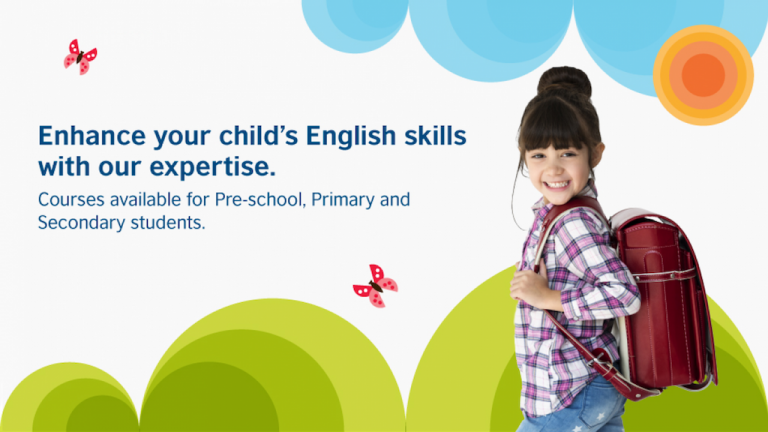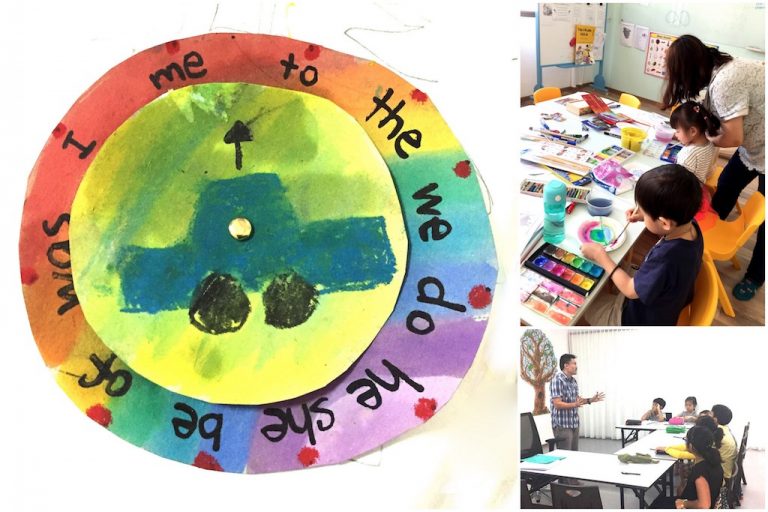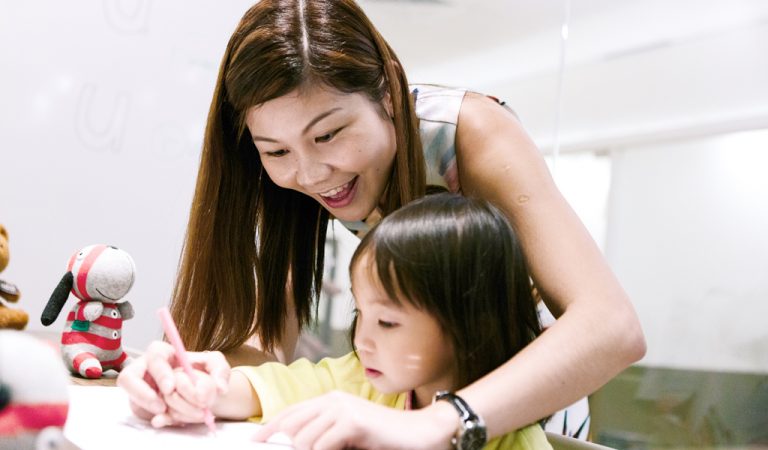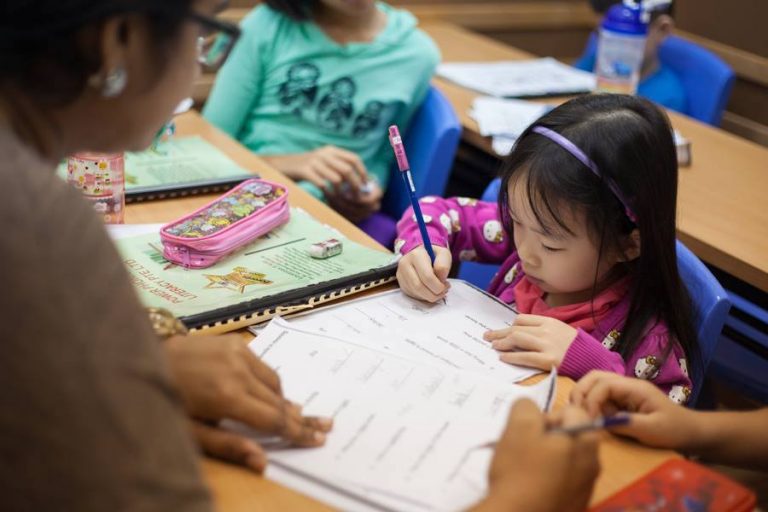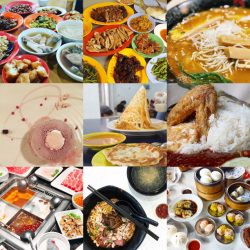SingaporeMotherhood | Preschooler & Up
October 2017
Is your K2 Child ready for P1 English?

If your K2 child is still struggling with reading and writing English, these are the places — with different learning style to suit different children — he or she can catch up before term starts next year.
In Primary One your child will be introduced to the first of many assessments in her academic life. While these are not ‘real’ exams and tests per se, they will still be taken into consideration for your child’s final subject score at the end of the year.
[banner][/banner]
For English, these bite-sized assessments include multiple-choice question (MCQs) on grammar and vocabulary, a cloze passage, word order questions, and comprehension. At the end of the year, there may be a short writing test as well. Your child will also have her first listening comprehension and oral tests. Stressed? Don’t be.
The most important thing you can do to prepare your child for P1 is to teach her to read. “Strong reading skills gives them the best foundation on which to succeed,” Blair Hulteen, Professional Development Manager at I Can Read confirms.
But just knowing how to read the words is not enough; children have to understand what they are reading, too. When reading with your child, ask simple questions before, during and after the story to make sure your child understands it. “Ask them which part they like or did not like. This exercises simple analytical skills and teaches them to build opinions,” says Matthew Scott, Head of Pre-school Courses at the British Council, at the British Council.
But what if you simply don’t have the time to teach your child to read, or have no idea how to do it? Don’t worry, it’s okay to seek outside help. The key is to start early so that your child already has a grasp of the language before entering Primary One. Read on to find out how some English language schools in Singapore are helping preschoolers prepare. One of them may be a match made in heaven for your little one.
For Well-Rounded Learning with Fun: the British Council
A sound grasp of phonics helps children to decode and read the challenging vocabulary they may encounter in Primary One, Matthew Scott, Head of Pre-school Courses at the British Council, tells us. At the British Council, teachers aim to make “dry and uninspiring” phonics fun and engaging so that children enjoy the learning process and achieve this ability.
What they do in class: Children learn new sounds though activities – like matching picture cards of letters and sounds – games, and drills. While many children can read by K2, they often struggle to comprehend what they are reading. So apart from phonics mastery, storybooks are used in lessons to help children develop language fluency and understanding.
Moving beyond reading: Children also learn the importance of being able to write neatly and confidently by the time they go to Primary One. “The sooner they are able to do this, the sooner they can develop the content of their writing,” Matthew says. How can you help? Be patient and keep practising with your child. Encourage your child to take pride in his work by showing an interest in his writing, and praising his efforts.
Website: https://www.britishcouncil.sg/
Gentle Curve to Language Learning: Curious Thoughts Academy
This is the only licensed centre in Singapore with the Victoria Carlton literacy programme (based on the Jolly Phonics framework). It also has a Students at Risk Targeted Intervention (STAR) Programme which helps children with learning difficulties. Operating as a social enterprise, The Academy offers a child from a less privileged background free tuition with every three paying students.
What they do in class: The STAR Programme runs from September to December. Children can join any time during this period. In every lesson children revise reading and writing, and get an introduction to the P1 syllabus. Shuohan Yao, Principal and Co-Founder of the Academy tells us that improvement is usually seen by the fifth week.
Moving beyond reading: The programme provides strategies for literacy improvement, materials to support struggling readers, and techniques to stimulate the brain and raise self-esteem and EQ. It has also been proven to help children with learning difficulties. After completing this programme, children can join the Academy’s regular P1 English classes.
Website: https://academy.curiousthoughts.sg
For Developing Good Habits from Young: Kumon
Apart from regular lessons at the centre, Kumon students carry out daily worksheet study at home. While studying at the centre, children follow a simple routine that supports their home study. The Instructor observes their study behaviour, particularly when doing repetition and studying new content. The Instructor then assigns homework that students can think through and complete on their own, even at home. Parents are advised to set aside a ‘Kumon time’ every day and guide their children when they face difficulties.
What they do in class: At preschool level, children begin by repeating and reciting words and sentences with their instructor. The focus is to learn new words, recognise them and be able to recite from memory. They move onto learning to read and write fluently through worksheet exercises and oral reading. This consists of letter and word tracing, letter combinations, spelling patterns and rhyming skills.
Moving beyond reading: The Kumon English Programme works on sentence structure, paragraph building, summarisation, and critical reading. Children get a reading list consisting of 380 titles which encourages them to read from a wide range of genres and styles. The books are listed according to difficulty and a K2 child who’s reading fluently at his level can progress and read more advanced material.
Website: http://sg.kumonglobal.com/
To Cultivate a Lifelong Love for Reading: I Can Read
Some K2 children have a challenging path ahead of them when preparing for Primary 1. No one knows this better than Blair Hulteen, Professional Development Manager at I Can Read, who tells us that preparing kids with strong reading skills gives them the best foundation for success. However, this is easier said than done. “Traditional reading methods are insufficient at best, and misleading at the worst,” says Blair. Based on the research by two Australian veteran educational psychologists, the I Can Read method goes beyond phonics. It also teaches children how to easily decode the English language. This gives them the skills they need to be strong and independent readers.
What they do in class: Children use an I Can Read Code Card and a Screener with diacritical marks (accents). The marks indicate different pronunciations of a letter. Through this decoding method, children will be able to sound words correctly. Consequently this creates a learning environment where reading feels easy, while promoting confidence and engagement in children.
Moving beyond reading: Phonics is not the be all and end all when it comes to learning how to read. I Can Read helps to inspire a love for reading in children. “If you can do that, not only will children be equipped with the skills for Primary 1, they have been equipped for the rest of their lives,” says Blair.
Website: http://icanread.asia/singapore/english
Relatable Lessons for Life: The Learning Lab
The Learning Lab believes that learning is most effective when a child is able to relate classroom lessons to daily life experiences. As Lee Sue Lynn, Academic Director for the Early Years Programme explains, “When your child is able to form a connection between the words he or she reads on paper to the world he or she lives in, your child will naturally develop a joy and love for learning.”
What they do in class: Children get exposure to real world content, and practice reading and writing about things that happen around them. This motivates the children to master the art of reading and writing, says Sue Lynn. Children enrolled in The Learning Lab are also able to access the school’s library of 77,000 books.
Moving beyond reading: Lessons focus on building a strong foundation in reading, writing, thinking and speaking.
Website: https://www.thelearninglab.com.sg/
For an All-in-one English programme: Read in a Week
“Read in a Week” has been helping children become readers for 10 years. This all-in-one programme is unique in that it is speedy, comprehensive, and systematic, teaching children phonics, reading and spelling at one go.
What they do in class: Five to six-year olds follow a progress bar (see chart above), learning to read 500 consonant-vowel-consonant words in six lessons. The first two lessons are devoted to phonics. “In lesson three children are introduced to blends,” Principal Liza Lim says. “By lesson six they will be able to read 500 words.” After this, children start learning longer words. After they have attended 20 or more sessions, the centre will prepare them for Primary One by practicing grammar-comprehension-vocabulary passages from past year exam papers.
Moving beyond reading: Here, children also learn to break words into syllables and segments for advanced reading and spelling skills. Older children and adults are welcome to also learn phonics here so that parents can help their children read better.
Website: http://www.phonicsread.com/
Header image: Mike Tinnion on Unsplash
All content from this article, including images, cannot be reproduced without credits or written permission from SingaporeMotherhood.
Follow us on Facebook, Instagram, and Telegram for the latest article and promotion updates.




